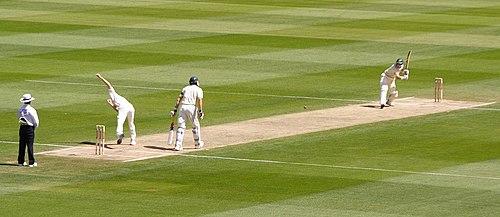- Advertisement -
In a strategic move ahead of their much-anticipated encounter, England won the toss and elected to bowl against a reshuffled Indian side, notably missing spearhead Jasprit Bumrah, who has been rested. The decision marks a pivotal moment in the match as both teams look to capitalize on their altered line-ups in this high-stakes clash. With India making several changes, England’s choice to field first sets the stage for an intense battle on the pitch, promising a fascinating contest between two cricketing powerhouses.
England Elects to Bowl First in Response to India’s Altered Lineup
England’s captain, seizing the advantage after winning the toss, opted to send India in to bat first. This tactical decision comes on the back of India’s notable lineup changes, most prominently the resting of their spearhead, Jasprit Bumrah. England’s bowling unit appeared confident in exploiting the altered Indian batting order, aiming to capitalize early with aggressive spells and strategic field placements.
Key factors influencing England’s choice included:
- India’s missing strike bowler: Bumrah’s absence reduces early wicket-taking pressure on England, allowing them to settle on attacking lines.
- Opportunity to exploit fresh conditions: With overcast weather and pitch moisture forecasted, England’s seamers anticipate movement conducive to early breakthroughs.
- Psychological edge: Bowling first against an unfamiliar Indian batting setup could unsettle the visitors and provide crucial overs of dominance.
| Team | Key Change | Impact |
|---|---|---|
| India | Bumrah rested | Reduced pace attack potency |
| England | Chose to bowl first | Pressure Indian batting order early |
Impact of Bumrah’s Absence on India’s Bowling Strategy and Team Dynamics
The absence of Jasprit Bumrah has undeniably forced the Indian team management to rethink their bowling attack and overall strategy. Known for his lethal yorkers and ability to control pressure, Bumrah’s rest has led to a more balanced approach where the onus shifts on other pacers like Mohammed Siraj and Shardul Thakur to step up. This change not only affects the bowling unit’s rhythm but also alters the tactical options captain Rohit Sharma can deploy during crucial moments. India’s bowling attack has leaned towards a more pace-and-swing-oriented style, with greater emphasis on building pressure through consistent line and length rather than outright aggression.
From a team dynamics standpoint, Bumrah’s absence offers opportunities for emerging bowlers to prove their mettle, but it also introduces challenges in maintaining morale and on-field communication. The supporting staff and senior players have taken on additional leadership roles to ensure cohesion and focus remain intact. Below is a quick comparison of bowling roles with and without Bumrah in the playing XI:
| Role | With Bumrah | Without Bumrah |
|---|---|---|
| Strike Bowler | Jasprit Bumrah | Mohammed Siraj / Shardul Thakur |
| Death Overs Specialist | Bumrah’s precise Yorkers | Shardul Thakur / Newcomers tested |
| Support and Pressure Builder | Bumrah + Other Pacers | Other Pacers sharing Load |
- Increased responsibility on secondary bowlers to fill Bumrah’s void.
- Shift in tactical plans with new bowling partnerships forming.
- Enhanced leadership role for senior players to maintain bowling unit’s morale.
Strategic Recommendations for England to Leverage Early Bowling Advantage
Capitalizing on the decision to bowl first, England must deploy their pace attack with precision and aggression to unsettle the restructured Indian lineup without Jasprit Bumrah. Early breakthroughs are crucial to applying scoreboard pressure and exploiting potential nerves within the opposition’s top order. England’s bowlers should focus on maintaining tight lines just outside the off-stump, leveraging swing movement under favorable conditions. By consistently executing well-directed short-pitched deliveries and varying lengths, the seamers can induce false shots and create wicket-taking opportunities.
Complementing tactical bowling, field placements should be dynamically adjusted to support attacking plans while safeguarding against boundary leaks. England can consider the following strategies:
- Slip cordon reinforcement: Increase slips to three or four initially to capitalize on edge-induced chances.
- Strategic use of bouncers: Targeting key Indian batsmen to disrupt their rhythm and confidence.
- Rotating strike prevents settling: Applying pressure with dot balls and forcing risky singles.
- Utilizing early overs for experimentation: Introduce subtle variations including cutters and slower balls to exploit adaptation gaps.
| Bowler | Recommended Role | Key Focus Area |
|---|---|---|
| James Anderson | Lead Swing Bowler | Outswing to right-handers |
| Stuart Broad | Aggressive Attacker | Short-pitched deliveries |
| Mark Wood | Strike Bowler | Initial pace explosion |
The Conclusion
As England win the toss and choose to bowl first against a reshaped Indian side with Jasprit Bumrah rested, the stage is set for a compelling contest. Both teams will look to capitalize on their strategic decisions and altered line-ups as the match unfolds. Fans can expect a keenly fought encounter as England aim to leverage early bowling conditions, while India will seek to adapt quickly and post a competitive total. Stay tuned for live updates and expert analysis as this highly anticipated clash progresses.
- Advertisement -


